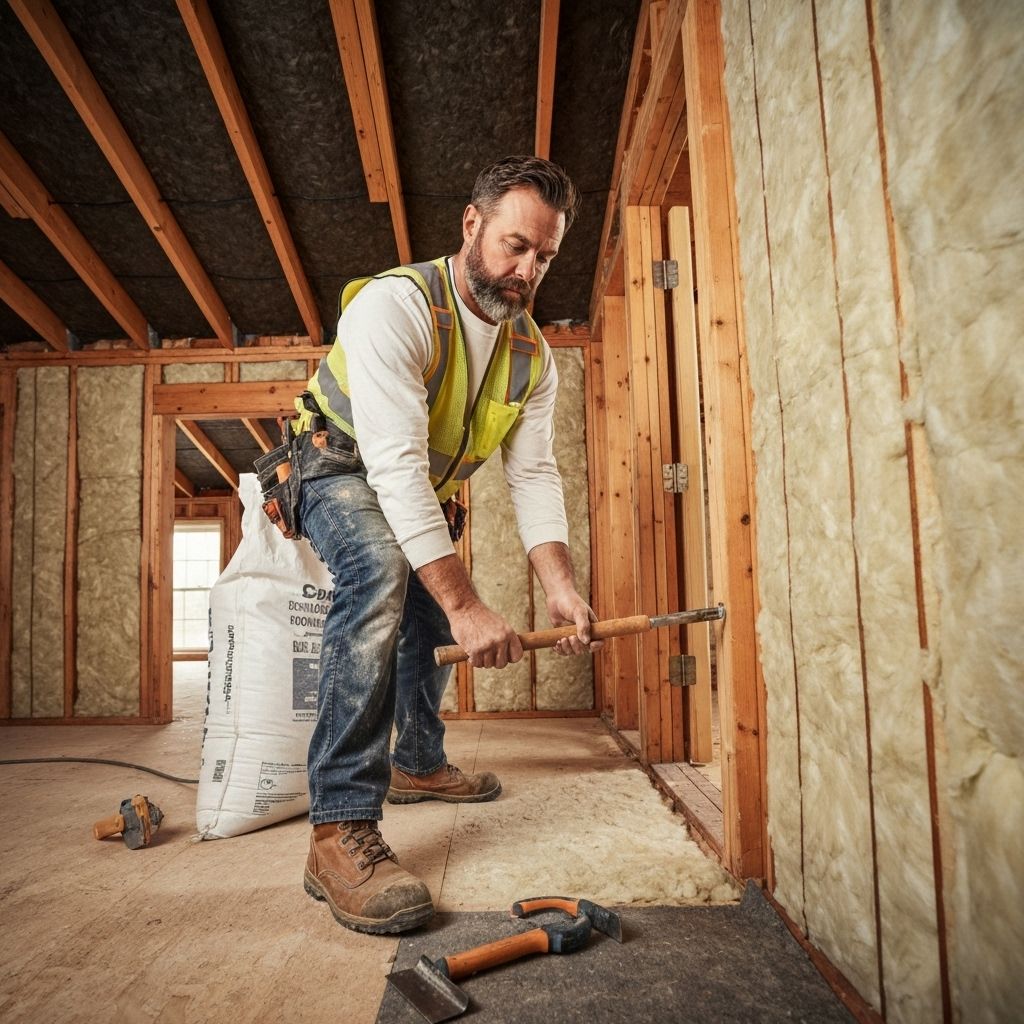When it comes to making your home comfortable, energy-efficient, and worthwhile, the necessity of adequate insulation cannot be underemphasized. Many homeowners neglect the critical role that roof space and basement insulation play in managing temperature, cutting down on energy costs, and enhancing overall home performance. Understanding the ins and outs of insulation can discover the secret to a more enjoyable living environment while lessening your carbon footprint and elevating indoor air quality.
In this manual, we will examine all you need you need to know about home insulation, from how to check your home's insulation levels to the variances between batt and blown-in insulation. If you're considering a do-it-yourself attic insulation project or looking to insulate your basement, we will provide guidance into insulation materials, R-values, and the frequent mistakes to prevent. Discover how adequate insulation can not only keep your home pleasant year-round but also enhance its value and lengthen the life of your HVAC system. We will delve beneath the surface and discover the necessary information necessary to make wise insulation choices for your home.
Understanding Insulation

When it comes to home thermal insulation, there are numerous types to examine, each with its unique characteristics and benefits. Batts insulation, made from fiberglass or rock wool, comes in preformed panels that fit among the studs in barriers or rafters in lofts. This kind is well-liked for its ease of assembly and cost-effectiveness. It's frequently used in fresh constructions and retrofitting projects and provides satisfactory thermal resistance while also helping to reduce noise.
Blown-in insulation, typically made from cellulose or glass fiber, involves pumping loose material into ceilings or spaces using specific equipment. This method allows for increased flexibility in covering irregular spaces and can help achieve a elevated R-value in hard-to-reach areas. Loose-fill insulation is particularly effective in lofts, where air leaks can contribute to thermal escape during cold seasons and excessive heat during summer, rendering it a adaptive choice for numerous house owners.
Spray foam insulation is one more option that has gained recognition in recent years. It is sprayed as a fluid that expands to fill cracks and nooks, providing an airtight barrier. Not only does spray foam offer excellent insulation properties, but it also works as a vapor barrier, safeguarding your residence from moisture damage. Every of these insulation types has its benefits and cons, making it crucial to assess your specific needs when deciding on the best choice for your home.
DIY Insulation and Sealing Air Leaks
Embarking on a do-it-yourself insulation task can seem daunting, but with the right tools and understanding, you can significantly improve your home's energy savings. Start by assessing your attic and basement, as these areas often need the greatest attention. Use a torch to check for any obvious gaps, cracks, or areas missing insulation. Taking the time to examine these areas can help reduce your costs on your energy bills and increase your overall well-being.
Once you identify areas that need insulation, consider the type that meets your needs most effectively. Blanket insulation is easy to install in standard stud frames, making it a popular choice for attics and walls. On the other hand, blown-in insulation is ideal for filling non-standard spaces or achieving high levels of coverage in existing areas. Be sure to wear safety equipment, including gloves and a mask, when working with insulation products. This protective equipment is essential to safeguard against dust and potential irritants.
Once installing insulation, air sealing is the next important step to guarantee effectiveness. Use caulk for small gaps and foam insulation for big openings around windows, doors, and plumbing. Pay special attention to any draft-prone areas you identified during your initial inspection. Sealing these leaks not only enhances your newly installed insulation's performance but also boosts your HVAC system's efficiency, making your home more comfortable year-round.
Thermal insulation Advantages and Value
Investing in insulation offers numerous benefits which extend beyond simple climate control. One of the most significant advantages is power efficiency. Adequate insulation assists maintain a stable indoor climate, reducing the burden on HVAC and cooling systems. This results in reduced utility bills, allowing homeowners to set aside money over time. By ensuring that your home is properly insulated, you can also help reduce your carbon footprint, making a beneficial effect on the environment.
Another important aspect of insulation is its function in enhancing property worth. Homes with effective insulation are often more appealing to potential buyers, as they offer a significantly comfortable living environment and lower energy costs. A well-insulated home is also less prone to issues like mildew and moisture, which can scare away buyers. Thus, when considering insulation companies , enhancing insulation can be seen as a subtle upgrade that reaps rewards in the long run.
Additionally, insulation plays a part to improved indoor air quality and noise reduction. Proper fitting reduces drafts and stops outdoor pollutants from getting into the home, resulting in a healthier living space. In addition, different insulation materials can effectively reduce sound, rendering your home quieter and tranquil. By grasping the varied value of insulation, homeowners can make knowledgeable decisions that enhance their comfort, finances, and overall home condition.
